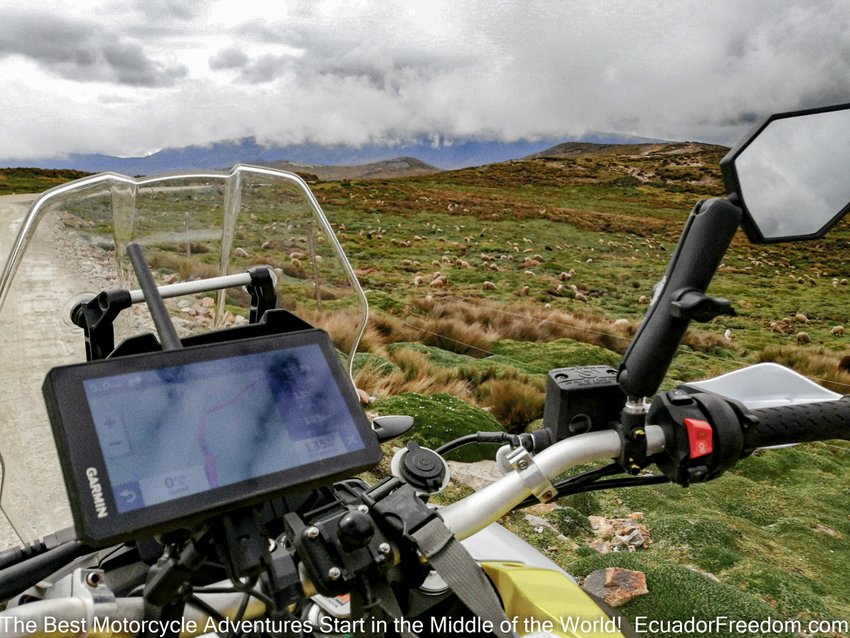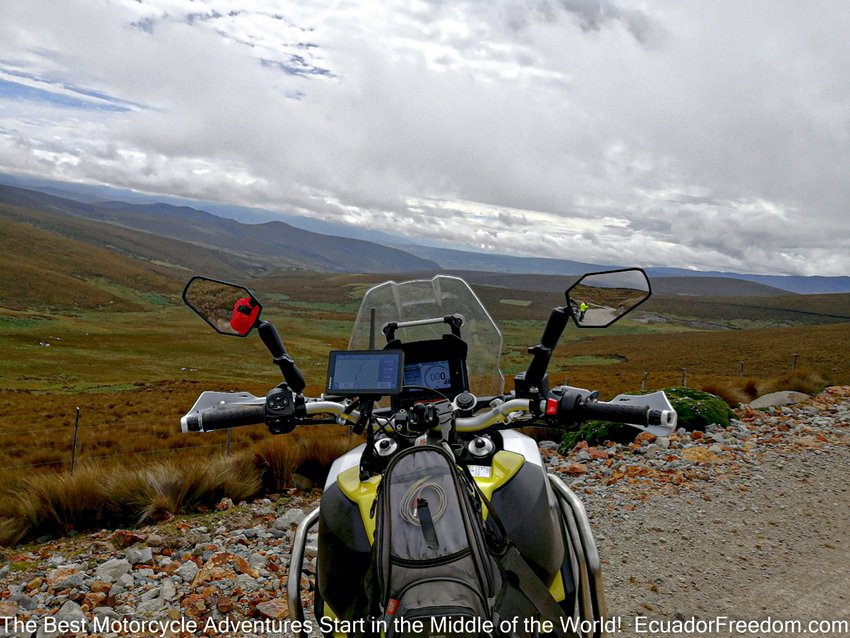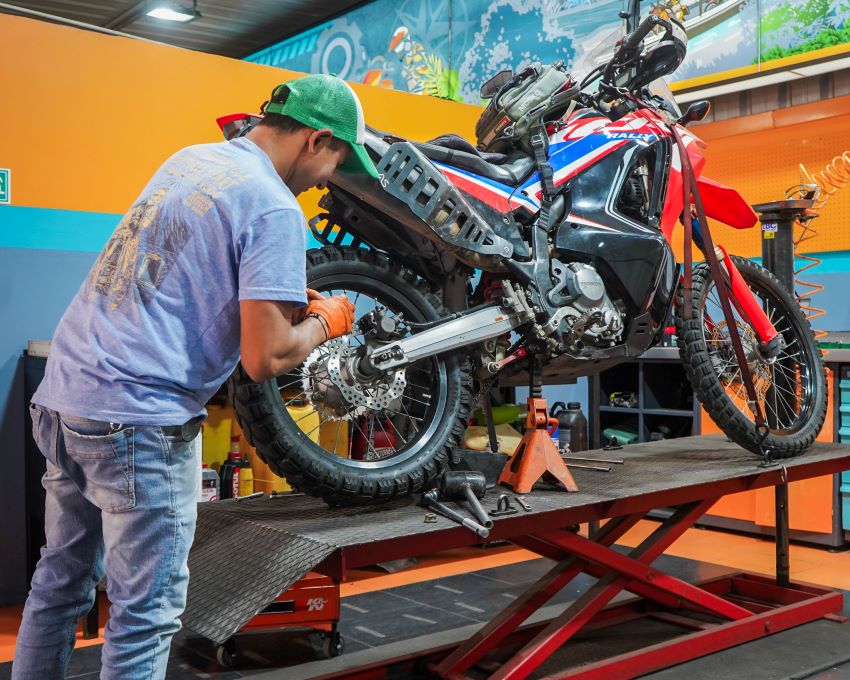
PSA - Stop Mounting Your Cell Phone to Your Handlebars
It’s no secret that we’re big advocates of dedicated GPS satellite navigation units for motorcycle travel, and you’ll find them on every fly and ride adventure we host here at Ecuador Freedom Bike Rental. Stand-alone GPS units offer a host of advantages over cell phones when it comes to navigation (they work from anywhere on the globe, are much more well-suited to off-road travel, and include life-saving emergency features, to name a few), but there are other reasons you shouldn’t be relying on your cell phone to get around. Below, we’ll outline a few of the main reasons we believe self-guided GPS motorcycle tours should use an actual GPS, as well as some of the risks you run when you try to get by using your smartphone.

Motorcycles Are Notorious for Destroying Cell Phone Cameras
Over the past year or so, you’ve probably heard about (or experienced firsthand) the damage motorcycles can do to cell phones on rigid mounts. This is no urban myth, and even the folks at Apple have acknowledged the phenomenon. In short, the vibrations from a motorcycle’s engine don’t vibe too well with modern smartphone’s optical image stabilization (OIS) systems, which causes your phone’s camera to take blurry shots or to stop working entirely.
iPhones are the most well-documented victim here, but other brands use the same types of OIS systems to keep your pictures crisp, so the issue isn’t limited to Apple products by any stretch. This is why we’ve seen some of the biggest phone-mount companies like Quad Lock roll out additional “vibration dampening” accessories over the last year or so, and while they’re a good start, they’re not a guaranteed fix: The folks at Quad Lock state that while their latest kit reduces these high-frequency vibrations by a whopping 90% or more, it doesn’t eliminate them entirely.
Most reports of harmful vibrations come from riders on either single or twin-cylinder bikes like the KTM 1290, Royal Enfield Himalayan, Suzuki DR650, or Ducati Multistrada, but issues have also been reported on triples like the Triumph Speed Triple and even inline fours like the Yamaha R1. Until these OIS systems become refined enough to survive vibrations on their own, your best bet is to play it safe.

You Can Still Use Your Phone with a Motorcycle GPS Unit
Think about all the things you might use your smartphone for on your motorcycle. Navigation is a favorite, of course, but many riders also use them for music, phone calls, talk to text messaging, and more. Well, if you didn’t already know, you heard it here first: A modern GPS can do all that, too.
That’s because advanced GPS units all pair directly to your smartphone using Bluetooth, and incorporate all your phone’s most essential features into their touchscreen interfaces. We use the latest Garmin Zümo XT on our self-guided GPS tours, and these motorcycle-specific units incorporate hands-free calling, smart notifications, and music selection into a single full-color glove-friendly display that’s bright enough to easily see in direct sunlight.
We prefer this approach because it allows our customers to keep their phones stashed in their luggage or on their person. Vibration concerns aside, keeping your phone off your handlebars keeps it out of harm's way in the event of a crash, inclement weather, and flying rocks or debris.
Speaking of crashing with your phone, it’s also important to remember that sometimes you and your bike land in very different places after a crash. You may recall back in 2019 when a rider made the news in Colorado by coming off his bike and falling some 70 feet into a pool of water below. He was lucky enough to walk away from the accident and was also lucky to have his friends nearby, but if you were to take a spill like that solo, you might not be so fortunate.
The thought of finding yourself with a broken bone in the middle of nowhere isn’t a fun one, but the idea of going through it without the ability to call emergency help to your location is much worse. Again, if you happen to have cell service and have your phone on your person, it’s always in arms reach in case of emergency. We’d still prefer to have a Garmin inReach system on hand for reliability’s sake, but neither will do you any good if you and your bike get separated.
Motorcycle GPS Units Aren’t Reliant On Cell Service
Fly and ride adventures in a foreign country are life-changing experiences, but as is the case with most international travel, cell phone service won’t be the highlight of your trip. International travel is an extreme example, of course, but poor cell reception is something every adventure rider is familiar with at home or abroad.
Granted, getting lost on an adventure bike is sometimes part of the fun. Still, at some point, you’ll need to find your way back to civilization, and if you’re counting on your cell phone to get you there, you’re playing a dangerous game. GPS units, on the other hand, rely on global satellite networks that provide dependable service from anywhere on the planet with a view of the sky above. That uninterrupted service also applies to important safety features like two-way messaging and emergency distress signals, both of which can be crucial on a self-guided GPS motorcycle tour.
You’ll even find the latest “incident detection” software on the Garmin units we use for our tours, which can send an emergency message out on your behalf when you’re unresponsive after an accident. This is a feature we’re happy to set up for our customers, whether on our stand-alone Garmin Zumo XT units, or in tandem with the Garmin inReach system. Certain cell phone apps now offer similar automated SOS functions, but if you’ve got no signal, even the most advanced app in the world won’t do you any good in an emergency.
Put Simply, A Motorcycle GPS Delivers Peace of Mind
At the end of the day, the main reason we always use a dedicated GPS over a cell phone is that it’s simply the best tool for the job. We want our customers to have the best vacation experience possible, and equipping them with rugged equipment that will stand up to all manner of use and abuse is part of the “vacation guarantee” that comes with every Ecuador Freedom Bike Rental adventure.
We’ve been running self-guided GPS tours with Garmin devices for some 13 years now, and we know what these units are capable of. We’ve had time to sort out and correct all the bugs and quirks on these routes, which is something that simply can’t be done without real-world know-how. We’ve seen cell phones try to guide riders down staircases in the middle of Quito and across pedestrian rope bridges over rivers in the middle of the Amazon. The routes marked on our Garmin units have been meticulously scouted and plotted by our experienced team. It takes considerable time and effort, but we do it for a reason.
It’s the same reason we maintain a massive fleet of over 55 highly capable motorcycles tuned up and ready to go at all times. It’s the same reason we keep a team of support trucks on hand to assist our riders out in the field, and it’s the same reason we have an in-house team of mechanics on-call 24 hours a day, 7 days a week: When you don’t have to sweat the small stuff, you’re free to focus on enjoying the riding experience - and delivering that experience is what we do best.
Comments....
or post as a guest
Be the first to comment.












